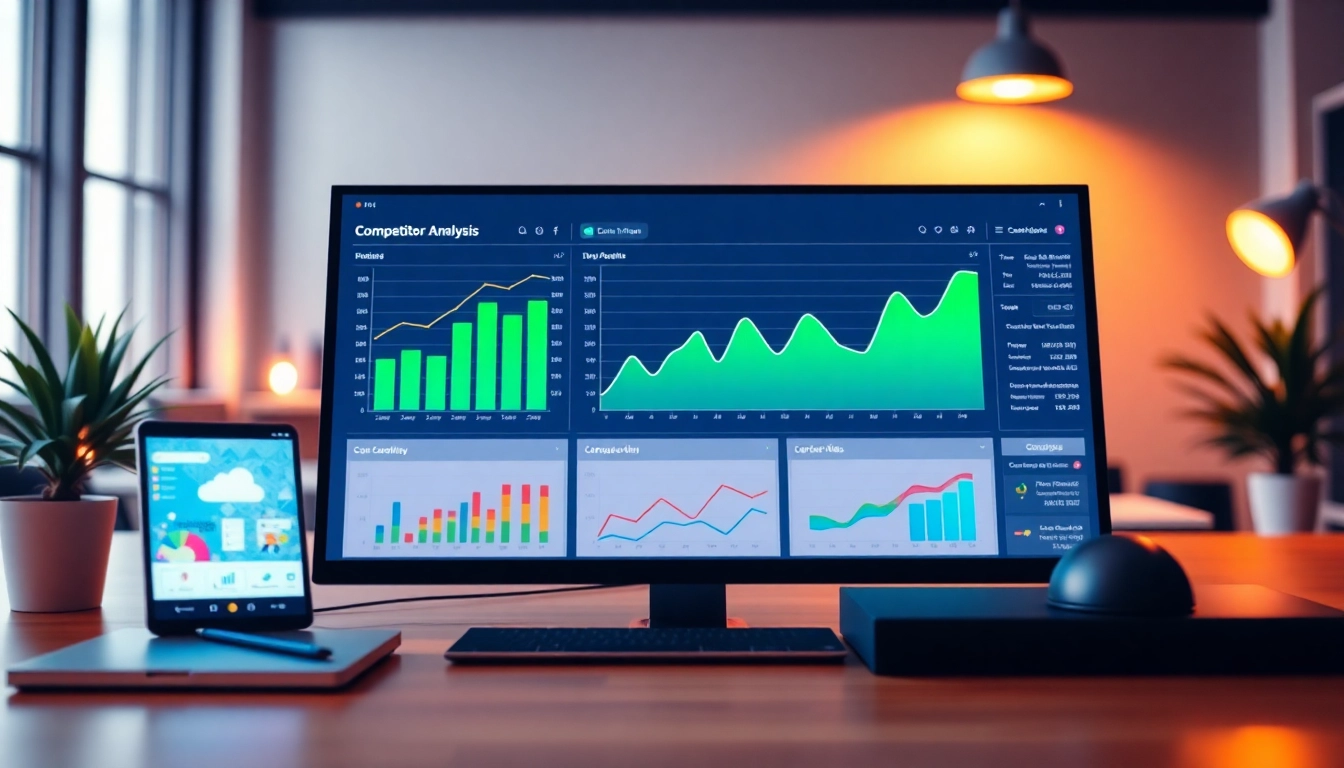Understanding Competitor Analysis
In today’s competitive market landscape, businesses cannot afford to overlook the significance of understanding their competition. Competitor analysis, also known as competitive analysis, is crucial for organizations aiming to gain an edge over rivals. It entails a comprehensive examination of competitors within your industry to gain insights into their offerings, branding, sales strategies, and marketing approaches.
Definition and Importance
Competitor analysis is the systematic evaluation of key competitors in the same market. This analysis helps businesses identify their strengths and weaknesses compared to rival companies. Engaging in this process is vital not only for current operations but also for strategic planning, resource allocation, and identifying new opportunities. It allows businesses to make informed decisions that drive success.
Types of Competitors
Understanding the different types of competitors is foundational to effective competitor analysis. Competitors can generally be categorized as:
- Direct Competitors: These are companies offering the same or very similar products or services to the same target market. An example would be Coca-Cola and Pepsi.
- Indirect Competitors: Companies that offer different products or services but satisfy the same customer need. For instance, tea brands are indirect competitors to soft drink companies.
- Potential Competitors: Emerging companies that are not currently competing in your market but could disrupt your business in the future.
- Substitute Competitors: Products or services that can be used instead of yours, appealing to the same customer base.
Key Benefits of Monitoring Competition
Regularly engaging in competitor analysis comes with several benefits, including:
- Market Insights: By monitoring your competitors, you gain valuable insights into market trends and consumer behavior.
- Benchmarking: Competitor analysis allows you to measure your performance against your competitors’, helping you identify areas for improvement.
- Innovation: Understanding your competitors’ weaknesses presents opportunities for innovation in your offerings or business model.
- Strategic Positioning: Analyzing competitors enables businesses to effectively position themselves in the market, making them appealing to the right audience.
Conducting a Comprehensive Analysis
Identifying Direct and Indirect Competitors
The first step in effective competitor analysis involves clearly identifying both direct and indirect competitors. This includes conducting thorough market research to compile a list of businesses within your industry. Utilize tools like Google Trends, SimilarWeb, or niche-specific databases to gain insights.
Collecting Data and Insights
Once identified, gather data on your competitors. This can include:
- Product offerings and features
- Pricing strategies and discounts
- Marketing and promotional strategies
- Customer feedback and reviews
Consider leveraging both qualitative and quantitative sources to get a rounded view. Online consumer reviews, industry reports, and social media sentiment are vital in understanding how competitors are perceived in the market.
Analyzing Market Trends
After gathering data, analyze it to detect trends and patterns. Focus on market growth, shifting consumer preferences, and technological advancements that could impact your industry. Identifying these trends enables you to be proactive rather than reactive, fostering a strategic advantage.
Essential Tools for Competitor Analysis
Recommended Software and Platforms
The effectiveness of competitor analysis can often be enhanced using the right tools. Some widely regarded tools include:
- SEMrush: An all-in-one marketing tool that provides insights into competitors’ digital marketing strategies.
- Ahrefs: This tool allows you to analyze your competitors’ backlink profiles and keyword strategies.
- Similarweb: Useful for estimating competitors’ traffic and engagement metrics across web and mobile platforms.
- BuzzSumo: This platform helps analyze what types of content perform well in your industry.
Free vs. Paid Tools
While free tools can provide some basic insights, investing in paid tools often yields more comprehensive information. Free tools might include Google Alerts for monitoring competitor mentions and basic social media analytics. However, for detailed insights into website performance or marketing channels, a paid tool will typically be more beneficial.
Case Studies of Effective Tools in Action
Consider the example of a mid-sized e-commerce company that adopted Ahrefs and SEMrush. By analyzing their competitors’ keyword strategies and back-linking, they discovered several opportunities to rank higher in search results. Within six months, they improved their organic traffic by 50% simply by implementing the insights gained from these tools.
Implementing Findings into Your Strategy
Aligning Your Marketing Efforts
Following the completion of competitor analysis, the next step is to adjust your marketing strategy accordingly. Use the data gathered to fine-tune your messaging, value propositions, and target audiences. If you discover that competitors are leveraging social media effectively, consider increasing your presence on these platforms to capture that audience.
Enhancing Product Offerings
Review market offerings to ensure your products or services are in line with or exceed market expectations. If competitors provide better customer service or features, aim to enhance your offerings by addressing these gaps. Continually innovate based on competitor insights to retain your competitive edge.
Setting Competitive Pricing Strategies
Your pricing strategy is a critical component of your overall market positioning. By understanding the price points of your competitors, you can set competitive pricing that reflects your brand’s value. Employ psychological pricing strategies or create bundled offers to enhance perceived value while remaining competitive.
Measuring the Impact of Your Strategies
Tracking Performance Metrics
To gauge the effectiveness of your competitive strategies, define specific Key Performance Indicators (KPIs), such as:
- Market share growth
- Customer acquisition costs
- Return on investment (ROI) for marketing campaigns
- Conversion rates
Regular tracking allows businesses to understand what works and what does not, enabling ongoing optimization of their strategy.
Adjusting Tactics Based on Analysis
Competitor analysis is not a one-time activity. It should be a continuous process. As you gather metrics and insights, be ready to pivot your approach quickly if competitive dynamics change. Stay agile to respond to market shifts or competitive advancements effectively.
Continuous Improvement and Learning
Finally, cultivate a culture of continuous learning within your organization regarding competitive landscapes. Host regular reviews of competitor analysis findings and encourage teams to share insights and recommendations. This ongoing commitment to understanding competition will enhance strategic decision-making and overall business resilience.



